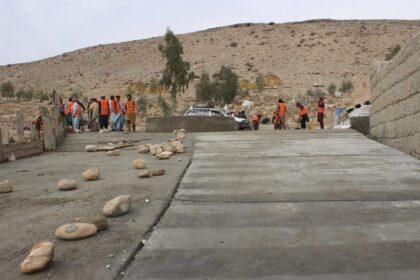RASC News Agency: More than two years into the Taliban’s rule in Afghanistan, the reclusive group is formulating a strategy to achieve economic self-sufficiency for the nation. Taliban authorities are overseeing the construction of dams and canals, aimed at fortifying agricultural practices. Factories operate tirelessly throughout the night, manufacturing sturdy steel beams and materials essential for various infrastructure projects. The ambitions of the Taliban are, to some extent, necessitated by their circumstances. The exacerbation of an already precarious situation is attributed to their curtailment of women’s rights, and attempts to control Afghanistan’s central bank reserves, held abroad, have resulted in the cessation of Western financial support.
While foreign aid previously covered three-fourths of public expenditures, the Taliban now asserts a considerable reliance on domestic revenues and customs to finance their projects. Abdul Latif Nazari, the deputy minister of the Taliban’s economic affairs, conveyed in an interview that these financial constraints impose limitations on the scope of government projects but affirmed, “We are on the right path, a path leading us toward self-sufficiency.” However, the economic conditions for Afghanistan’s population remain grim. According to a United Nations report, the number of Afghanistanis in need of humanitarian assistance has surged by approximately 60% since 2021, now constituting over two-thirds of the population.
Omar Joya, an Afghanistani economist, remarked, “Self-sufficiency, by itself, means nothing unless the Taliban can achieve economic growth, employment, reduced poverty levels, and a decent standard of living for people to meet their basic needs.” Taliban authorities insist that the priority lies in the development of oil extraction, utilizing reserves that could ultimately fulfill domestic needs. Officials predict that, with the establishment of new wells, one of Afghanistan’s largest oil fields in the Amu River basin in the country’s north could triple its production in the coming months.
They are also eager to exploit the vast wealth of lithium and other mineral resources in the country, estimated to be close to a trillion dollars, as per a 2010 valuation by the United States Department of Defense. It is worth noting that the Taliban, through the auctioning of Afghanistan’s natural resources, aims to enhance its economic prowess, guarding against economic vulnerabilities alongside a legitimacy crisis that could threaten its survival.






